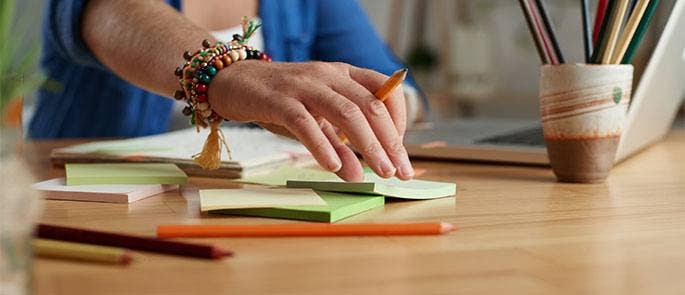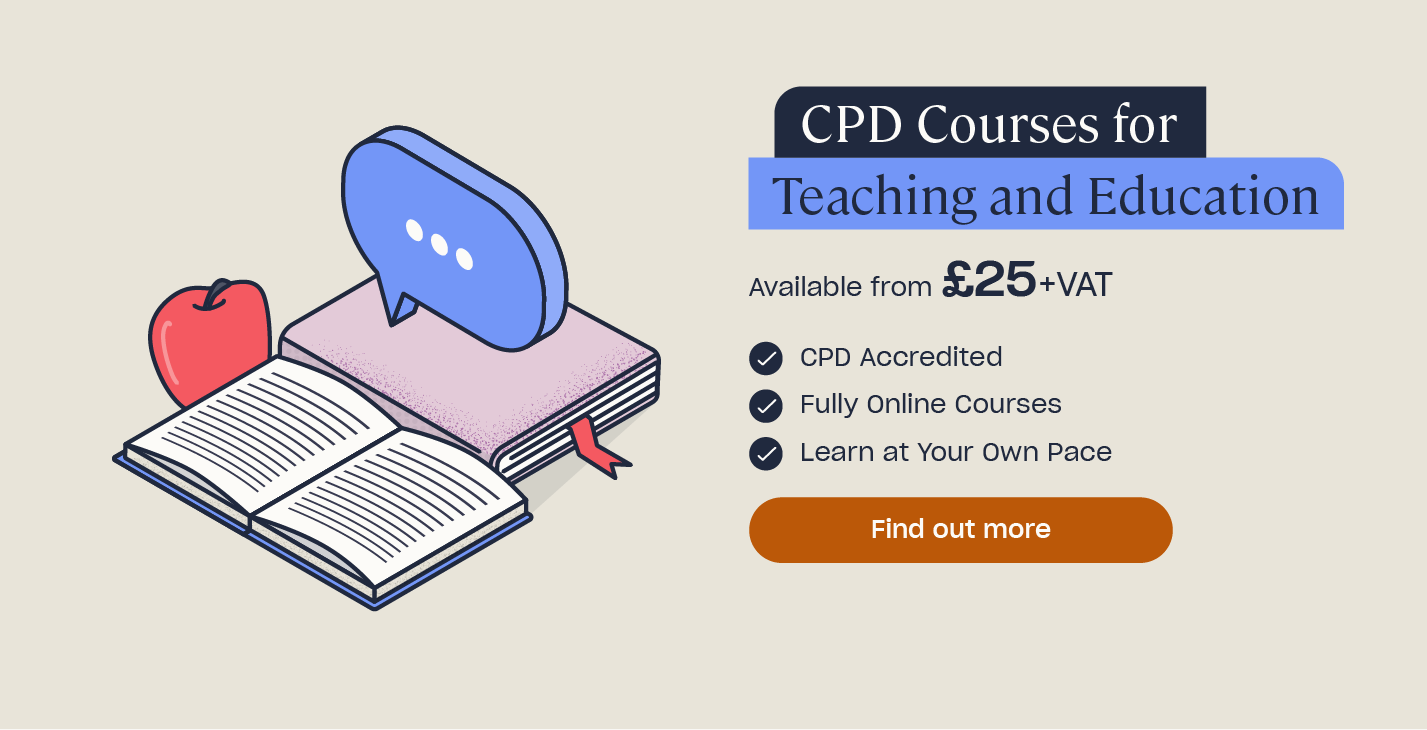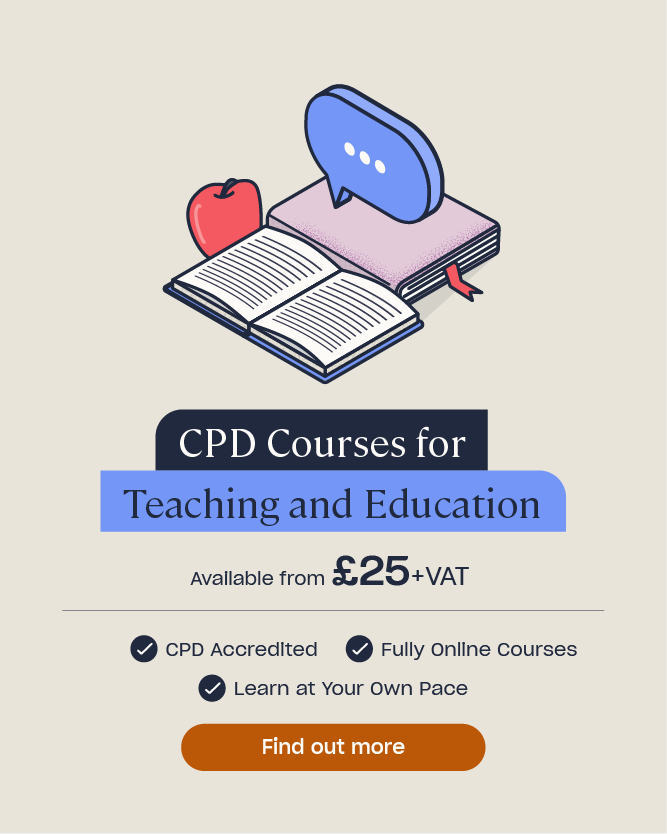What’s the Importance of Reflective Practice in Teaching?
Experiential learning, the process of learning by doing, is an effective way of improving your working methods in all roles, but particularly in the education sector. In teaching, this notion is often referred to as reflective practice. Being able to continually review past lessons and improve them is beneficial not only for your own professional growth but also for your students.
In this article, we will outline what reflective practice is exactly, and why it’s so important in teaching. Furthermore, we’ll provide concrete examples of reflective practice in teaching along with advice on how to incorporate this technique into your role.
What is Reflective Practice?
Reflective practice is where you aim to continually improve your teaching by repeatedly reflecting on your methods, in order to ensure you’re providing the best learning experience for your students.
Teaching is an extremely busy profession in which the work never really stops, and as such it can be easy to fall into the habit of reusing past lesson plans or resources time and time again to make life easier. Whilst this is completely understandable, it’s not the most effective way of teaching.

Reflective practice ensures you’re always evaluating past decisions in the classroom and making tweaks to improve your delivery and content, as well as tailoring your teaching to your current students as every cohort has different needs. It’s an essential aspect of ongoing professional development and part of being an effective teacher.
Learn more about effective teaching and its importance in our article on What is Effective Teaching?
Importance of Reflective Practice in Teaching
As we’ve touched upon, reflective practice is a crucial part of being an effective teacher and ensuring you’re always developing professionally to benefit both yourself and your learners. This is just touching the surface of the importance of reflective practice, however. Below are a range of other benefits reflective practice could bring to your career and your student’s educational experience.
Benefits of Reflective Practice for Teachers
Increases Your Confidence as a Teacher
By reflecting on your teaching practices, you will gain a better understanding of how your students learn and what are the best ways to teach them. The more you hone your practices, the more skilled you will become at delivering lessons that suit your current cohort of learners, finding new solutions to previous problems, and becoming a more flexible teacher. Thus, you will naturally develop confidence and be assured that you’re providing your students with the best education they could receive from you. To learn more about increasing your confidence when teaching, take a look at our article: How to Teach with Confidence.
Encourages Innovation
Reflective practice enables you to experiment with new ideas and find the methods that work best for your class. By varying your approaches to teaching, students will get a richer learning experience and thus will likely become more imaginative and adaptable thinkers themselves.

Boosts Classroom Relationships
In continuously reflecting on your teaching practices, you create an environment that centres on the learner and can thus provide better support for them. Focusing on your learners as individuals and identifying their various learning styles and needs will help them to feel better understood and cared for within the classroom, tightening the bond between teacher and student and increasing mutual respect. Furthermore, reflective practice helps to create more of a partnership between teachers and their colleagues and students as you work with them to hone your teaching methods.
Enhances Problem Solving
Teaching always comes with its challenges, so knowing how to overcome these and solve problems effectively is of the utmost importance. Reflective practice can help you to improve your skills in problem solving by learning from previous experiences, or those of a colleague. By drawing on your knowledge from past situations, you will become more resourceful in knowing how to devise the right strategies to overcome any issues effectively.
Interested in Learning More?
Build on your existing knowledge or learn new skills to help you in the classroom with our range of CPD Courses for Teaching and Education. Find everything from Challenging Behaviour to Leadership and Management.
Benefits of Reflective Teaching for Students
Improves Student Performance
Reflecting on your teaching practices is bound to improve the quality of your lessons over time and this will in turn impact the performance of your learners. Better teaching from you will result in them achieving higher academic results, benefiting both parties.
Increases Engagement in the Classroom
The range and variety of your teaching methods should increase with reflective practice as you experiment with which teaching methods are most effective and inspiring in your classroom. For students, this variation is likely to boost their engagement in your lessons as new ways of learning are often going to be considered more interesting and worthy of attention.

Creates a Safe and Respectful Learning Environment
Reflective teaching allows you to critically evaluate your classroom management and improve your handling of challenging behaviour. For example, you may assess your current rules and procedures to create a more positive and inclusive classroom environment overall with less disruptions. This will help to create a more productive and respectful learning experience for all students.
Fosters a Growth Mindset
As you reflect on your teaching practices and seek continual improvement, you’re modelling and promoting a growth mindset for your students which will encourage them to seek their own development. Children learn by example, and thus witnessing you demonstrating reflective practice will motivate them to embrace effort, resilience and perseverance too.
Examples of Reflective Practice in Teaching
To break the idea of reflective practice down into more actionable compartments, there are four core forms of reflective practice that you can use in your teaching:
Individual Reflection
This is the most common type of reflective practice, involving thinking about your own practices and what has worked well or what could be improved. What are your strengths and weaknesses in teaching, and what can you do to better support your current students?
Students Reflections
Ultimately, it’s your learner’s opinions of your teaching that matters most as they’re the ones at whom your lessons are aimed and for whom their quality matters most. Thus, an important aspect of reflective practice is to ask your students questions about your teaching to see what they believe does or doesn’t work and what they’d like more or less of.
Inviting, engaging with and acting upon the thoughts and opinions of your learners is known as encouraging pupil voice, and this can have a myriad of benefits for an educational establishment. Learn more about pupil voice and its benefits in our article on 5 Ways to Maximise Pupil Voice.

Colleague’s Reflections
One great thing about teaching is that you work as part of a team of educators, so you always have people to bounce ideas off of. You can use this to your advantage as part of reflective practice by asking your colleague’s professional opinions of your teaching methods, and to compare methods and come up with the best learning solutions together.
Perhaps create a feedback form that your colleagues can fill in to provide their opinions on your teaching and offer suggestions. This could be anonymous to promote complete honesty. You can find a free template to help gather such constructive criticism in our article on A Guide to 360 Degree Feedback.
Theoretical Reflections
There are always new ideas and schools of thought being developed within the education sector and many of these are based around improving teaching practices. Engaging critically in some of these new theories could provide some inspiration and give you a new outlook on how to approach future lessons.
By using a mixture of these four methods over time, you’ll achieve a broad and insightful view of your current teaching practises to help you reflect on these and move forward with implementing improvements.
How to Do Reflective Practice
Being a reflective practitioner should be an ongoing goal rather than a one-time event. Thus, it’s wise to incorporate reflection into your everyday teaching practice so that it eventually becomes second nature. Here are some tips on how to get the most out of reflective practice and ensure you’re continuously reaping its benefits.
Choose the Right Time
To effectively reflect on a lesson or classroom event, you need to ensure you can remember all the details of what’s occurred without your judgement being clouded by your initial feelings towards it.
For example, immediately after you’ve finished teaching you may have a gut reaction of joy or deflation depending on how you think it went. It’s best to let these initial emotions pass before you reflect, so that you can think logically through the positives and negatives of the lesson and make an unbiased judgement. Having said that, you don’t want to wait too long as you may begin to forget the details of what has occurred.
Hold Yourself Accountable
Having the intention to reflect on your practices is not enough. Rather, you must ensure you’re taking action to achieve an assessment of your methods. One way to hold yourself accountable is to incorporate reflective practice into your CPD hours and write down exactly how you intend to complete the activity.
A Personal Development Plan (PDP) is a great way to break down your goals (e.g. reflective practice) into actionable steps with a deadline. You can find an example PDP plan for teachers, including an editable template in our article titled Professional Development Plan for Teachers.

Be Honest With Yourself
Sometimes it can be easy to make excuses for our decisions or behaviour in order to justify them to ourselves, however this will prevent you from effectively reflecting on your practice. Being honest with what your weaknesses are and what you should have done differently is a key aspect of reflective practice and this is what will allow you to identify and implement improvements that ultimately make you a better teacher. It’s okay to make mistakes as long as you learn from them, which effective reflective practice will help you achieve.
Having said this, make sure you acknowledge the positives in your teaching too and reflect on your strengths in addition to your weaknesses.
Communicate Frequently and Effectively
Reflective practice, although its title may sound solitary, is a group activity. As mentioned, two of the four principle methods of reflection involve gathering the opinions of your students and colleagues. To do this, you must be able to communicate often with them and ensure this communication is constructive and productive. Only by achieving this will you learn what you need to know to implement improvements in your teaching methods.
Learn more about how to improve your communication as a teacher in our article on Effective Communication in the Classroom: Skills for Teachers.
Reflective practice is a vital part of the teaching profession, as it is key to developing your abilities and ensuring you’re educating learners to the best of your abilities. There are four main methods of reflecting on your practice, and these should be incorporated into your role habitually to ensure you’re able to make continuous progress rather than a one-time improvement. Becoming a reflective practitioner will bring numerous and significant benefits to both you and your students.
Further Resources:
- What is Effective Teaching?
- 5 Ways to Maximise Pupil Voice
- Professional Development Plan for Teachers
- CPD Courses for Teaching and Education
- What is the Problem-Solving Method of Teaching?
- Emotional Intelligence in Teaching











